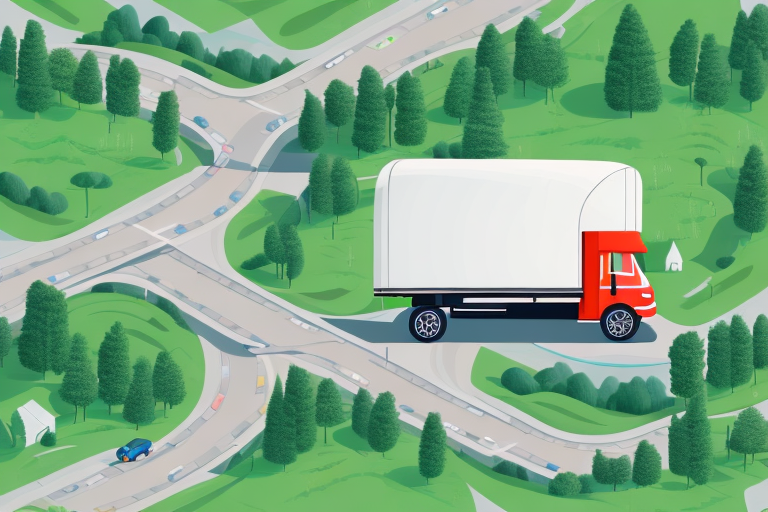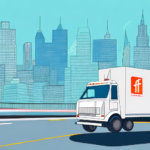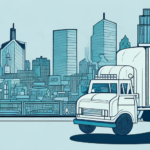Optimizing Last Mile Service Delivery for Maximum Efficiency
Last mile service delivery is the final stage of the delivery process, moving goods from a distribution center, warehouse, or fulfillment center to the end customer's doorstep. In recent years, last mile delivery has emerged as a critical component of the supply chain, significantly influencing the overall customer experience and business success. Optimizing last mile delivery can lead to reduced shipping costs, faster deliveries, improved customer satisfaction, and increased sales. This article delves into the importance of last mile service delivery, common challenges, technological advancements, best practices, and future trends to help businesses enhance their last mile delivery operations for maximum efficiency.
Understanding the Importance of Last Mile Service Delivery
Last mile delivery represents the final touchpoint of the supply chain that directly impacts the customer experience. It is the stage that customers are most likely to remember, significantly shaping their overall impression of a business. According to a study by Invesp, 84% of customers consider the delivery experience a crucial factor in their decision to repurchase from a company, and 98% believe that the delivery experience influences their loyalty to a brand. Therefore, businesses must prioritize their last mile delivery operations to meet customer expectations and foster loyalty.
Key Drivers of Last Mile Delivery Importance
- Customer Satisfaction: Efficient and reliable delivery enhances customer satisfaction and encourages repeat business.
- Competitive Advantage: Superior last mile delivery services can differentiate a business from its competitors.
- Operational Efficiency: Optimizing delivery routes and processes can reduce costs and improve overall supply chain efficiency.
Common Challenges in Last Mile Service Delivery
Last mile delivery presents several challenges for businesses due to the dynamic nature of the final delivery stage. These challenges include traffic congestion, unpredictable weather conditions, high delivery costs, and last-minute order changes, all of which can lead to delivery delays, increased costs, and dissatisfied customers. Addressing these challenges is essential for optimizing last mile delivery operations.
Traffic and Weather Variability
Unpredictable traffic and adverse weather conditions can cause significant delays in deliveries. Businesses are increasingly adopting route optimization software and real-time tracking to mitigate these issues, ensuring timely deliveries and enhancing the customer experience.
Package Theft
With the rise of online shopping, package theft has become a prevalent issue, particularly in urban areas. To combat this, businesses can implement security measures such as requiring signature confirmations, offering secure pickup locations, or utilizing smart lockboxes that require access codes. These measures help reduce losses and improve customer trust.
Technological Advancements Revolutionizing Last Mile Delivery
Technology has transformed the logistics industry, and last mile delivery is no exception. Businesses are leveraging advanced analytics, automation, and mobile computing to optimize their delivery operations.
Route Optimization Tools
Advanced route optimization tools analyze various factors, including traffic patterns and delivery windows, to calculate the most efficient delivery routes. This reduces delivery times and operational costs significantly.
Real-Time Tracking and Communication
Mobile computing devices enable delivery drivers to access real-time information and communicate effectively with customers. This improves delivery accuracy and enhances the overall customer experience.
Autonomous Delivery Vehicles
Innovations such as drones, robots, and autonomous vehicles are being tested and implemented to deliver small packages, reducing delivery times and operational costs. Companies like Amazon and UPS are at the forefront of adopting these technologies.
Best Practices for Managing Last Mile Logistics
Implementing best practices is crucial for optimizing last mile delivery operations. Here are some strategies businesses can adopt:
- Collaboration with Logistics Providers: Partnering with experienced logistics service providers can expand network coverage and provide access to the latest technologies.
- Real-Time Tracking: Investing in tracking and monitoring solutions offers customers accurate delivery information and updates.
- Proactive Communication: Keeping customers informed about delivery schedules and any changes via email, text messages, or push notifications enhances transparency and trust.
- Flexible Delivery Options: Offering diverse delivery modes such as in-store pickups, lockers, drop boxes, and crowdsourced delivery provides customers with convenience and flexibility.
Implementing Order Cut-Off Times and Delivery Windows
Setting clear order cut-off times and delivery windows helps manage customer expectations and optimize delivery routes. This practice ensures that deliveries are made within specified time frames, enhancing reliability.
The Role of Data Analytics in Enhancing Last Mile Delivery
Data analytics plays a pivotal role in gaining insights into last mile delivery operations and identifying areas for improvement. Businesses can leverage data analytics in the following ways:
- Route Optimization: Analyzing real-time traffic data and delivery histories helps identify the most efficient routes, minimizing delivery times and costs.
- Demand Forecasting: By examining order patterns and customer behavior, businesses can predict order volumes, optimize inventory levels, and reduce stockouts.
- Delivery Accuracy: Analyzing data on delivery issues and customer feedback helps improve delivery accuracy and reduce errors.
Sustainable and Eco-Friendly Last Mile Delivery Practices
Last mile delivery operations significantly impact the environment due to high fuel consumption and emissions. Adopting sustainable practices can help businesses reduce their carbon footprint and build an eco-friendly delivery system.
- Electric and Hybrid Vehicles: Utilizing electric and hybrid vehicles reduces emissions and conserves energy.
- Optimized Delivery Routes: Minimizing fuel consumption and reducing traffic congestion through optimized routes contributes to sustainability.
- Green Packaging: Implementing eco-friendly packaging practices reduces waste and promotes recycling.
- Partnering with Sustainable Suppliers: Collaborating with suppliers and logistics partners that prioritize sustainability and social responsibility enhances overall eco-friendliness.
Enhancing Customer Experience through Efficient Last Mile Deliveries
Efficient last mile deliveries are crucial for enhancing the overall customer experience and driving business success. Here are ways businesses can optimize their last mile delivery operations to improve customer satisfaction:
- Real-Time Tracking: Providing customers with real-time tracking and delivery updates improves transparency and reliability.
- Flexible Delivery Options: Offering various delivery options such as in-store pickups, lockers, and drop boxes provides convenience and flexibility.
- Delivery Accuracy and Timeliness: Ensuring on-time deliveries and accurate order fulfillment reduces customer frustration and increases satisfaction.
- Customer Feedback: Actively seeking and utilizing customer feedback helps improve delivery processes and service quality.
Future Trends in Last Mile Delivery
The logistics industry is continually evolving, and last mile delivery operations are set to undergo significant changes in the future. Key trends to watch include:
- Artificial Intelligence and Machine Learning: These technologies will further optimize delivery routes and predict customer demand with greater accuracy.
- Expansion of Autonomous Deliveries: Drone and autonomous vehicle deliveries will become more widespread, covering more areas and industries.
- Blockchain Technology: Adoption of blockchain will enhance supply chain visibility, transparency, and security.
- Eco-Friendly Practices: Continued growth in sustainable delivery practices will reduce the carbon footprint and promote social responsibility.
Implications of Emerging Technologies
Emerging technologies like blockchain and artificial intelligence will not only streamline operations but also build trust with customers through enhanced transparency and security in the delivery process.
Conclusion
Optimizing last mile service delivery is essential for businesses aiming to enhance customer experience, reduce shipping costs, and drive overall success. By adopting best practices, leveraging technological advancements, utilizing data analytics, addressing security and sustainability concerns, and staying abreast of future trends, businesses can significantly improve their last mile delivery operations. Focusing on the last mile delivery stage provides a competitive advantage and fosters customer loyalty, ultimately contributing to long-term business growth.






















